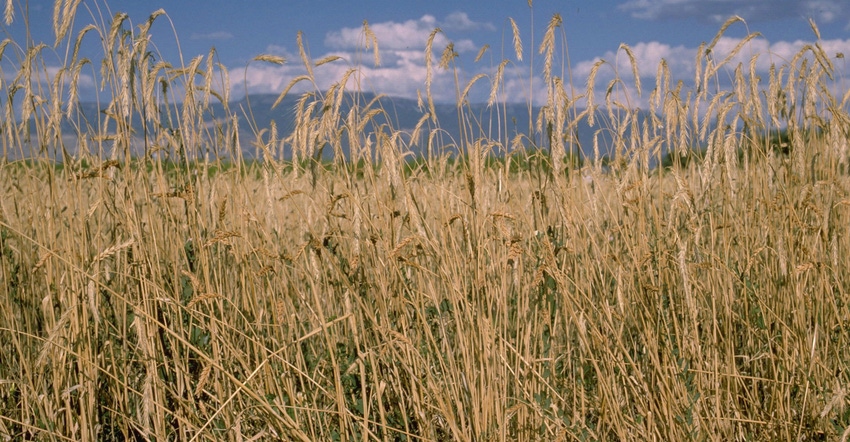August 4, 2021

Cover crops have long been touted as a way to reduce weeds in fields. One University of Missouri study found that one cover crop helps in management of the fast-growing weed waterhemp.
Waterhemp has been known to grow up to 1 inch per day, making control difficult. However, MU Extension weed scientist Mandy Bish and a team of researchers studied how planting soybeans into a green cover crop helps with early-season waterhemp emergence.
The group used cereal rye as its cover crop of choice. What she found was the method may reduce waterhemp populations without yield loss. The Missouri Soybean Merchandising Council funded the research.
Here are four takeaways from the experiment:
1. High seeding rates do not increase biomass. The team seeded cereal rye at 30, 50, 70, 90 and 110 pounds per acre in late October and early November. At soybean planting, cereal rye ranged 40-43 inches. Bish found that higher seeding rates of cereal rye did not increase biomass. Regardless of seeding rates, biomass generated was about 14,500 pounds per acre.
2. Biomass does not affect yield or stand. Bish says accumulated biomass did not affect soybean stands compared to soybeans planted into no cover. However, soybeans planted into cereal rye grew taller than soybeans planted into no-cover plots. Soybean yield was about the same, regardless of seeding rate.
3. Waterhemp reduced in two of three years. Biomass from a cereal rye cover crop reduced waterhemp emergence for four weeks in 2018 experiments and six weeks in 2020, compared to plots without a cover crop. But this was not true in 2019, when waterhemp pressure at the study site was extremely high.
Bish says residual herbicides were not applied in this study, but the group continues to research integration of a cereal rye cover crop with residual herbicides. In a USDA-funded study, MU’s results show that early-season weed emergence was suppressed by about 97% when cereal rye was terminated before stem elongation was complete (about two weeks before soybean planting) and a residual herbicide was applied at soybean planting.
“We are currently evaluating combinations of soybean planting dates, cereal rye termination timings and residual herbicide applications in a collaborative project funded by the United Soybean Board,” Bish says.

FAST GROWTH: Young waterhemp plants have a lot of vigor, growing up to 1 to 1¼ inch per day. Left unchecked, they can rob soybean growers of yield.
4. No silver bullets in weed control. “Neither cereal rye, nor any cover crop, should be viewed as a silver bullet for weed control,” Bish says. Understanding the soil seed bank is extremely important when making decisions about integrating cover crops and chemicals for weed control, she adds.
“In studies where waterhemp seed in the soil seed bank was extremely high [corresponding to about 500 or more plants per square meter], we have not seen cereal rye consistently suppress waterhemp from emerging,” Bish says. “However, when waterhemp densities are around 100 to 200 plants per square meter, we can see the effects of cereal rye on waterhemp suppression.”
For information
The University of Missouri offers additional learning opportunities through the following newsletters and podcasts:
“To terminate or not to terminate? What we’ve learned about cereal rye, planting green, and seeding rates,” MU Integrated Pest & Crop Management newsletter, March 2021: ipm.missouri.edu/IPCM/2021/3/cerealRye-MB.
“Cover Crops for Weed Management,” part of the War Against Weeds podcast series (waragainstweeds.libsyn.com). Bish discusses cover crops and weed management with MU Extension state weed specialist Kevin Bradley.
Source: University of Missouri, which is solely responsible for the information provided and is wholly owned by the source. Informa Business Media and all its subsidiaries are not responsible for any of the content contained in this information asset.
You May Also Like




